Vegetarianism - introduction
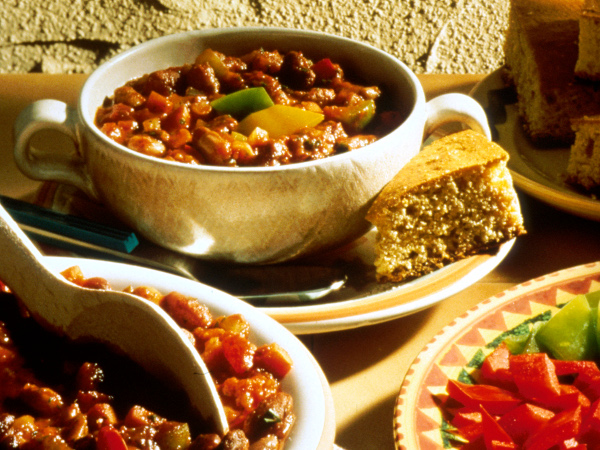
“Eat food. Not too much. Mostly plants. That, more or less, is the short answer to the supposedly incredibly complicated and confusing question of what we humans should eat in order to be maximally healthy.” – Michael Pollan
Contents
What is vegetarianism?
According to the Vegetarian Society, a vegetarian is “someone who lives on a diet of grains, pulses, nuts, seeds, vegetables and fruits with, or without, the use of dairy products and eggs. A vegetarian does not eat any meat, poultry, game, fish, shellfish or by-products of slaughter.” Lacto-ovo vegetarians, who eat dairy products and eggs, are the most common kind, while lacto-vegetarians eat dairy but not eggs. Vegans do not eat, use or wear any animal-tested or derived product. People who eat fish but avoid red or white meat are sometimes referred to as vegetarians but the correct term is actually ‘pescatarian’.
People may choose to follow a vegetarian diet for a variety of reasons: religion (Hindus, Buddhists and Jains eschew some or all animal products), health (scares such as ‘mad cow disease’, rising obesity rates, or the association of high cholesterol with red meat consumption), or concern for the environment (animal farming uses vast amounts of land and water and creates pollution). Many western vegetarians do not eat meat for ethical reasons as they do not wish to contribute to the suffering of animals in factory farms or slaughterhouses. Some feel it is simply not right to consume the flesh of another living being.

Bombay dosa with chickpea sauce. Here’s the recipe.
People in certain cultures have been vegetarian for thousands of years, and there is evidence that some ancient cultures also abstained from meat. In more modern times, however, the ‘vegetable diet’ first began to gain favour in Britain in the early 19th century, around the time of the temperance movement and widespread social reform that attempted to address the problems faced by a newly industrialised Victorian society. Eating flesh was seen in certain circles as unnatural and a potential cause of aggression, while a plant-based diet was believed to be beneficial for health. The earliest recorded use of the term ‘vegetarian’ in print was in the April 1842 issue of The Healthian journal, and the Vegetarian Society was established soon after in Salford, Manchester, in 1847. Notable adherents of the movement in the early years of the 20th century included George Bernard Shaw and Mohandas ‘Mahatma’ Ghandi.
Since those early beginnings, vegetarianism has grown in popularity in Western societies with growing awareness of animal rights, the environment and the link between health and nutrition. Today, while vegetarians are still a minority group, their lifestyle choices are generally accepted in many countries (if not always fully understood by some).

Vegetarianism, unlike veganism, can include eggs and dairy products.
What are the benefits of vegetarianism?
NB: Lowimpact.org provides information about keeping animals and small-scale meat production, but only via organic smallholdings, without any of the cruelty or unsustainable practices mentioned here. We support vegetarianism because it can help reduce the total amount of meat produced / consumed, which we think is a good thing. Whether animals should be kept (or hunted) for meat and other resources at all is a philosophical point that is covered here.
Human health
People eating a well-balanced vegetarian diet are more likely to achieve the high-fibre, low fat diet recommended for optimal health. Research shows vegetarians tend to have lower rates of obesity, heart disease, cholesterol and blood pressure. This can further translate into a benefit for society as less strain is placed on health services from treating these conditions.
Animal welfare
From artificially inseminated conception to untimely death, most intensively-farmed animals’ lives are short and brutal. They are either slaughtered in their prime for meat or simply disposed of once past their best (laying hens, dairy cows). Male animals (chicks, calves) are usually surplus to requirements and are either killed immediately (chicks minced for pet food) or live very short, unnatural lives (veal calves). Those who do survive past infancy may spend their entire lives in cramped spaces and/or without natural light and can experience high levels of stress. For example, sows are kept in narrow ‘gestation’ crates which do not allow them to turn around for several weeks when giving birth. Pigs and chickens kept in confined spaces become bored, develop unnatural and aggressive behaviours and must endure painful teeth or beak clipping to prevent them injuring each other.
Exposés of factory farm and slaughterhouse practices have also revealed unbelievable levels of cruelty visited on animals. Vegetarians consider this level of suffering unjustifiable and prefer to opt out of the system.

Ale & mushroom puff pastry pie. Here’s the recipe.
Environmental
Industrial livestock farming takes up the lion’s share of the world’s agricultural land (both for grazing and to produce feed grain), and more is required every year just to keep up with demand. Clear-cutting in the Amazon to create new pastures equates to 70% of the total deforestation in Latin America. A typical meat eater’s diet requires up to 2.5 times more land than a vegetarian’s (although it tends to be more marginal land that’s not good for producing vegetables). With grain-fed animals, it takes on average 7kg of grain to produce 1kg of beef, and 4kg of grain to produce 1kg of pork. Livestock rearing is also a highly water-intensive process: an estimated 13,000 to 100,000 litres of water is required to produce 1kg of beef, versus 1,000-2,000 litres per kilo of wheat. It follows that less meat eaten means less land required to feed a given number of people, so there would be more land available for nature.
Farmed animals are responsible for around 20% of all human-related greenhouse gas emissions. Carbon dioxide is released into the atmosphere when forests are cleared, cows and sheep produce 37% of human-related methane gas, and 65% of human-generated nitrous oxide comes from livestock farming, mostly from manure. While manure is useful as fertiliser, there are limits to the amount that can be absorbed by the land before it runs off, polluting waterways. Both methane and nitrous oxide have a far greater impact on global warming than carbon dioxide.
In the oceans, many global fisheries are known to be overexploited and with depleted stocks. Overfishing and by-catch (killing species that are not the intended catch, such as dolphin) are just two of a number of factors responsible for a decline in the number of marine species in certain parts of the world.

The easiest way to make sure that you’re not contributing to cruel, intensive animal farming is to not eat meat.
What can I do?
If you are interested in adopting a vegetarian lifestyle, the Vegetarian Society website has recipes and nutrition resources. They also offer vegetarian cookery courses. A wealth of information and recipes can be found on the Internet, and vegetarian cookbooks are widely available to buy in bookstores or online.
If you are new to meat-free cooking, it’s important to make food appetising. If it isn’t tasty or doesn’t look good, you won’t enjoy it and might fall back into eating meat as a default. Think about the food you already enjoy: is it vegetarian, or could you adapt it to make it so? A lot of international cuisine, especially Asian, is already animal-free and nutritionally well-balanced. This can be a good place to start, rather than simply removing the meat from traditional Western dishes. If you feel strongly that it just isn’t a meal without the meat-and-two-veg combo, you might like to try veggie burgers or sausages. These can be a good meat replacement if you’re in a hurry or at a barbecue. When shopping, look out for the Vegetarian Society accreditation label which offers a guarantee that a product is animal-free.

‘Traffic light’ smoothies. Here’s the recipe.
Try new things and think about contrasts of colours, flavours and texture. Beware of using unhealthy amounts of things like salt or cheese to make up for the meat flavour you’re used to. Get to know the contents of your spice rack intimately and experiment with new ingredients. Nuts and pulses are a great source of protein and fat, as well as providing interesting textures and flavours. Grains and pulses can be combined, either in one meal or throughout the day, to provide all the essential amino acids. Many food combinations even seem to have evolved with this in mind: beans on toast, red beans and rice (a South American staple), or dhal and bread or rice.
Properly informed and equipped, it is very easy to be vegetarian if cooking at home. Eating out may be harder, but most restaurants in the UK and US now offer at least one vegetarian option, and vegetarian restaurants can be found in most large towns and cities. Restaurant owners and chefs are usually more than happy to cater to the needs of their clients if they are made aware of them. Professional restaurateurs or caterers wanting to offer vegetarian food should think about cost, taste, how appealing the food is to customers and how to store it (the Vegetarian Society also runs a well-attended course for international chefs). Things may be harder for vegetarians in other cultures and it may be necessary at times to be quite firm with locals (or decide to be flexible yourself).

The three main parts of a vegetarian diet: fruit & veg; grains, bread & carbohydrates; and the rest – pulses, nuts, eggs, dairy, spices etc.
Vegetarian food can be very cost-effective but is not necessarily cheaper than meat, since these days the latter is often produced extremely cheaply. Vegetarian sausages are often just as expensive as meat ones. The cost will depend to an extent on where you shop: health food shops are a great place to find vegetarian alternatives but they can work out pretty pricey if attempting to do the entire weekly shop there.
In terms of health and nutrition, a well-balanced vegetarian diet is as safe as any other. Obviously being vegetarian does not automatically guarantee a healthy diet (a chip butty is vegetarian but probably shouldn’t form the cornerstone of a nutritious diet). However, eating meat does not necessarily guarantee a healthy balanced diet and many omnivores can just as easily lack important vitamins and minerals as vegetarians. People are sometimes advised to eat meat by their doctor but the Vegetarian Society believes this is usually due to a lack of understanding of nutrition on the part of the doctor rather than any genuine evidence that a plant-based diet is unhealthy. A vegetarian diet should follow the same rules as any other: five portions of fruit and veg a day, plus carbohydrate or starchy foods, and protein (from pulses, eggs, dairy, soy, etc.). It is especially important to plan for good nutrition if following a vegetarian diet during pregnancy, or with children or the elderly.

Mulligatawny soup. Here’s the recipe.
The attitudes of society and our peers can make a big difference to how easy it is to stick to something. It is always difficult to go against the grain; vegetarians are still a minority group and may be the target of jokes or teasing. This can be particularly prevalent at those times when meat is traditionally the focus of a celebration or event (barbecues, Christmas, Thanksgiving). Parents of vegetarian children should be especially aware of this. Vegetarians may need to develop a thick skin (or go on a few vegetarian forums to get ideas for witty ripostes or myth-busting). However, in the US and certain European countries at least, most people these days know at least one vegetarian and attitudes have come a long way.
Specialist(s)
Thanks to Alex Connell of the Vegetarian Society for information.

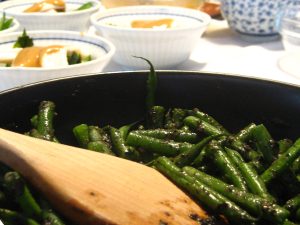
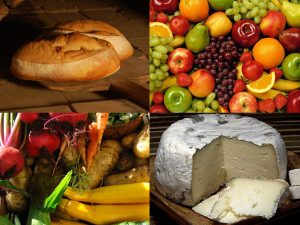
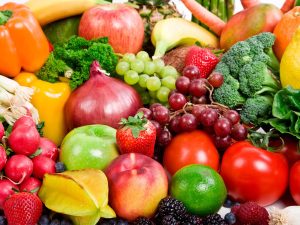
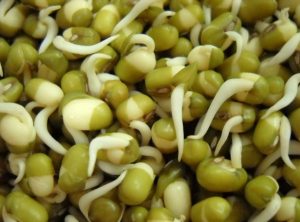
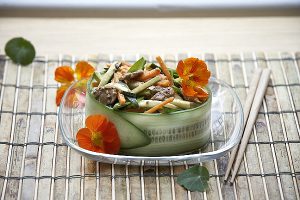
11 Comments
“Male animals (chicks, calves) are usually surplus to requirements and are either killed immediately (chicks minced for pet food) or live very short, unnatural lives (veal calves).” – I think we need a reality check on what is meant by ‘natural’ here. A natural life for the vast majority of non-domestic animals involves death before they reach breeding age, many of these in infancy. This is a natural process that prevents huge increases in populations (each animal only needing to reproduce itself once in it’s lifetime to maintain a stable population). Farming has enabled the vast majority of animals to longer than they naturally would and it is on this baseline that we compare lifespans of domesticated animals in captivity, not natural lifespans.
Male calves are usually kept for beef, rather than veal, and are responsible for about 50% of all beef production.
“When slaughtered, it is not unusual for animals to be insufficiently stunned and therefore still able to feel pain as they move down the production line to be cut up and skinned.” – This is not true. Stunning is process undertaken before killing to prevent the animals feeling pain when they are killed. An animal that has been insufficiently stunned is an issue because it may feel pain when it is killed but animals do not feel pain after they are dead, bled out and are being skinned. If this is the case then it is a problem with killing, not stunning.
Incidentally, pigs are kept in farrowing crates for giving birth and rearing piglets for 3-4 weeks after, mainly to protect piglets from overlying and mismothering. The natural litter-based breeding strategy of pigs relies upon high mortality to maintain population stability. This productivity is also one of the reasons why they are so commonly farmed. Gestation crates may still be used during pregnancy in some countries.
Rob, I think the problem is scale. With a global population heading towards 11 billion, and with more people wanting to eat meat, there has been a massive increase in meat consumption and production over the last 50 years, and it’s still increasing rapidly – http://who.int/nutrition/topics/3_foodconsumption/en/index4.html. This has given most people the idea, pushed by the corporate sector, that industrial agriculture is the only way to feed the world, when in fact, all that industrial agriculture is going to do is destroy soil in the long run, and the only way to feed 11 billion people is with mixed smallholdings – https://theecologist.org/2014/nov/22/want-double-world-food-production-return-land-small-farmers (there’s a lot more evidence for this, and it’s why we provide information on both vegetarianism/veganism and keeping animals on mixed smallholdings, which some find incongruous).
And you know that I can provide links to hundreds of videos of industrial meat production – thousands of chicks being swept into machines to be minced alive, animals watching other animals being killed, animals that are confined, or never get to go outside, pigs being insufficiently stunned and so on. Some people will see this and think, ‘no, I want nothing at all to do with this’, and I can’t blame them.
I’m coming round to your argument that a better message is ‘if you’re going to eat meat, make sure it’s from sustainable smallholdings, not from factory farms’ rather than ‘eat less (or no) meat’ – because with the latter message, it’s the sustainable farms that will suffer, because the people most likely to eat less meat / go veggie are exactly the people who would have eaten sustainable meat.
But still, I’d like to see sustainable meat production increase (because not everyone is going to be veggie), and industrial meat production decline hugely, which will result in an overall reduction in meat production (and more veggies). How we achieve that, I don’t know. But I do know of veggies that have started to eat a little bit of meat after visiting small, mixed farms that keep a few animals, humanely, who would find it very difficult to survive without the extra income that their meat provides. A major problem is that small farms have to cope with costs of adhering to legislation aimed at industrial agriculture, introduced because of problems caused by the practices of industrial agriculture. There is a lot that can be improved, and I’m encouraged that lots more people are understanding it, resulting in boom in community-supported agriculture and the like.
But if people want to opt out of animal agriculture altogether, I really can’t blame them.
Why don’t you include veganism in these, at this point it is very high profile and it would be nice as I am vegan for more than 30 years to see it included please. Animal cruelty is rife in our food chain and to be honest no matter how many vegetarians are out thier they are eating many foods like dairy and honey and other that continues the animals cruelty. So despite the fact that they don’t eat meat they are still contributing to the cruel ways animals are treated just to serve the human race. It also adds to extra carbon being created by burning and chopping down rain forests for soya just for animal feed. I was a vegetarian for a couple of years but realised that it wasn’t enough to stop the cruelty being done to farm animals throughout the world the poor animals going to slaughter in horrible lorries all stuffed in together the cows being kept pregnant so we can drink thier babies milk the sounds of a cow and calf separated is heart breaking, male calves being put in crates for veal male chicks killed pigs sows farrowing in once cage while her piglets feed from her in another cage the list goes on. We are now in the 21st century and we are still in the dark ages where meat production is concerned.
Hi Ann, thanks for your comment.
We do recognise the the importance of veganism and the reasons behind the choice – we wrote more about that here: https://www.lowimpact.org/posts/why-does-our-list-of-topics-include-vegetarianism-veganism-and-keeping-animals
We also have a separate topic for Veganism.
Hope that helps!
Hi Ann
Our veganism topic is here – https://www.lowimpact.org/categories/veganism
If Rehabilitation doesn’t work then Ibogaine always does. The false promise of traditional rehab fails million of addicts and alcoholics all over the world. Unfortunately, most of them don’t even know that there is a natural and rapid treatment called ibogaine that ends addiction without withdrawal and then eliminates the cravings for drink or drugs that guarantee relapse. <a href=”https://ibogainerehapshop.com”>Buy Ibogaine online</a> https://ibogainerehapshop.com/
Using the molecule ibogaine, delivered in a state of the art holistic care model, we can change the way we treat addiction. Our mission is to redefine the addiction recovery experience, providing those living with addiction the best possible recovery with quality Iboga products, at very affordable rates https://ibogasolutions.com/
Als u heroïne of cocaïne van het dark web wilt kopen, zijn wij een betrouwbare leverancier van heroïne en cocaïne met de beste heroïne van Europa. Daarnaast zijn we op veel locaties aanwezig en leveren we de beste heroïne van Europa.
https://heroinekopen.com/product-category/cocaine-kopen/
https://heroinekopen.com/
Whether you’re managing a chronic condition, looking for affordable medication options, or just need a reliable source for your prescriptions, we’re here to help. At PurePharmacyCare, we are committed to providing our customers with high-quality pharmaceuticals and personalized care.
<a href=”https://purepharmacycare.com/“>buy medication online </a>
https://purepharmacycare.com/
Wir arbeiten direkt mit Regierungsvertretern zusammen, um einen schnellen und sicheren Prozess zum Erwerb Ihres Führerscheins zu gewährleisten.
<a href=”https://legalerfuhrerschein.com/product/fuhrerschein-online-kaufen”> Führerschein online kaufen</a>
https://legalerfuhrerschein.com/
clone cards makes shopping a whole lot easy and better. Welcome to the new world.. the world of easy online shopping and swiping with any debts…. <a href=”https://clonedcardswebstore.com/”>Buy Cloned Cards</a>
https://clonedcardswebstore.com/